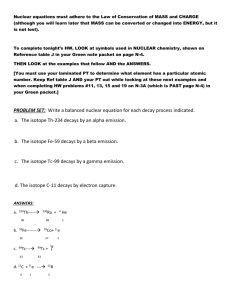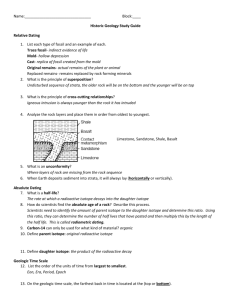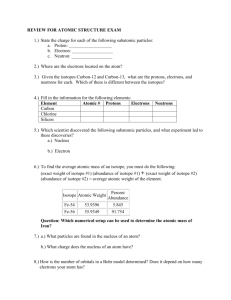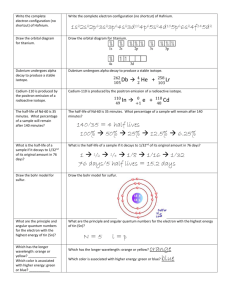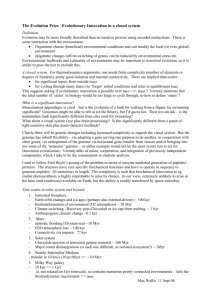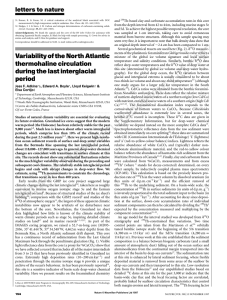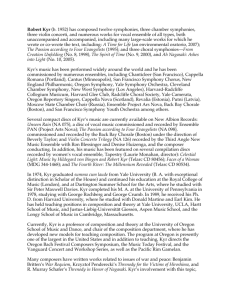Supplementary Discussion - Word file (194 KB )
advertisement
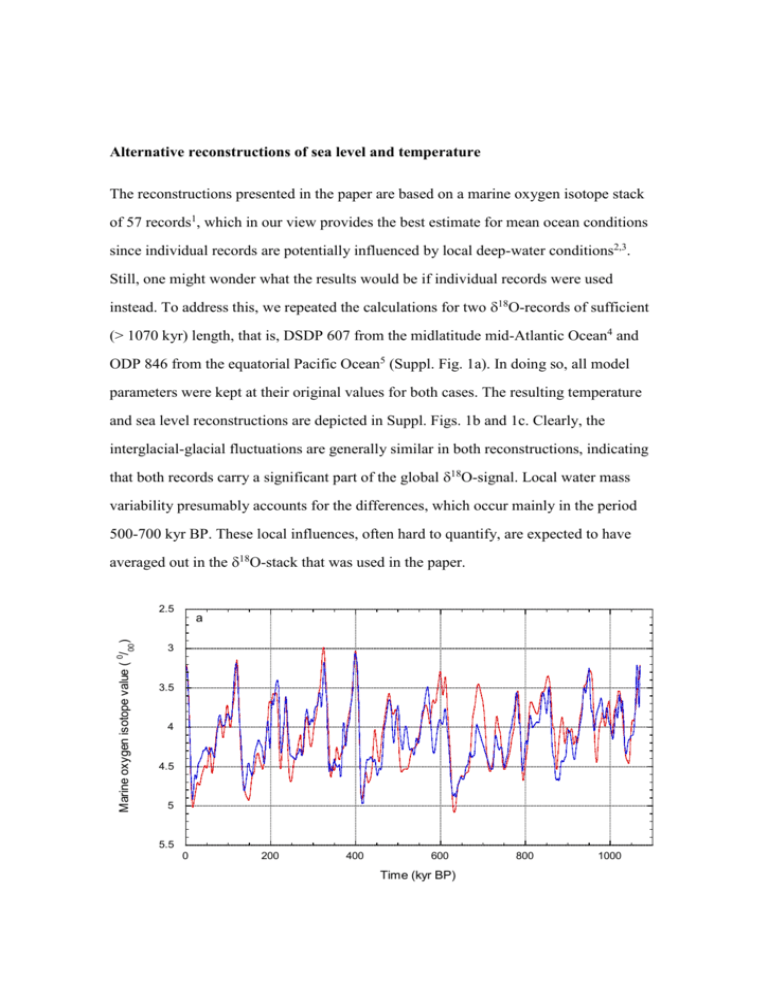
Alternative reconstructions of sea level and temperature The reconstructions presented in the paper are based on a marine oxygen isotope stack of 57 records1, which in our view provides the best estimate for mean ocean conditions since individual records are potentially influenced by local deep-water conditions2,3. Still, one might wonder what the results would be if individual records were used instead. To address this, we repeated the calculations for two 18O-records of sufficient (> 1070 kyr) length, that is, DSDP 607 from the midlatitude mid-Atlantic Ocean4 and ODP 846 from the equatorial Pacific Ocean5 (Suppl. Fig. 1a). In doing so, all model parameters were kept at their original values for both cases. The resulting temperature and sea level reconstructions are depicted in Suppl. Figs. 1b and 1c. Clearly, the interglacial-glacial fluctuations are generally similar in both reconstructions, indicating that both records carry a significant part of the global 18O-signal. Local water mass variability presumably accounts for the differences, which occur mainly in the period 500-700 kyr BP. These local influences, often hard to quantify, are expected to have averaged out in the 18O-stack that was used in the paper. Marine oxygen isotope value ( 0/00 ) 2.5 a 3 3.5 4 4.5 5 5.5 0 200 400 600 Time (kyr BP) 800 1000 10 b Surface air temperature (°C) deviation from present 5 0 -5 -10 -15 -20 0 200 400 600 800 1000 800 1000 Time (kyr BP) Global sea level (m below present) 0 c 20 40 60 80 100 120 140 0 200 400 600 Time (kyr BP) Supplementary Figure 1. Simulated 1070-kyr time series for two benthic oxygen isotope records. We have used the midlatitude central Atlantic record DSDP 607 (ref. 4) (red) and record ODP 846 from the equatorial Pacific5 (blue). To obtain equal interglacial values for both, 0.5 0/00 was added to the ODP 846 isotope record. a. Observed input oxygen isotope. b. Modelled NH surface air temperature. c. Modelled global sea level. Another issue is whether our new method, when used to quantify past global sea level based on marine isotope data, provides a significant advantage over simple scaling the 18O-signal. To test this, we have linearly converted 18O-values into global sea levels (minimum interglacial and maximum glacial values were assumed to represent 0 and – 127 m of global sea level, respectively). Suppl. Fig. 2 shows how modelled and scaled sea levels compare. In particular during glacial inception stages, linear scaling would overestimate sea level by as much as 20 m because the 18O-signal can then almost completely be attributed to climate cooling, as argued and shown in the paper. The reason for this is that ice sheets cannot always grow at the rate dictated by the 18Osignal, as ice accretion is maximized by the total accumulation rate. Even though the comparison appears to hold reasonably well for the remainder of glacial epochs, our results clearly demonstrate that the separation of the isotope signal into an ‘ice sheet’ and a ‘deep-water’ component is not constant in time (Fig. 4, middle), and that isotopescaled sea level estimates should therefore be interpreted with care. Note also that our method not only yields global sea level but also quantifies the spatial distribution of the paleo ice sheets. 140 18O-scaled global sea level (m below present) 120 100 80 60 Inception 40 Deglaciation 20 0 0 20 40 60 80 100 120 140 Modelled global sea level (m below present) Supplementary Figure 2. 18O-scaled global sea level versus modelled global sea level based on the 18O-stack1 used in the paper. Each green dot represents one 0.1-kyr value of the 1070-kyr run. 1. Lisiecki, L. E., & Raymo, M. E. A Pliocene-Pleistocene stack of 57 globally distributed benthic 18O records, Paleoceanography, 20, PA1003, doi:10.1029/2004PA001071 (2005). 2. Waelbroeck, C., et al. Sea-level and deep water temperature changes derived from benthic foraminifera isotopic records. Quat. Sci. Rev. 21, 295-305 (2002). 3. Lea, D. W., Martin, P. A., Pak, D. K. & Sperbo, H. J. Reconstructing a 350-kyr history of sea level using planktonic Mg/Ca and oxygen isotope records from a Cocos Ridge core. Quat. Sci. Rev. 21, 283-293 (2002). 4. Raymo, M. E., Ruddiman, W. F, Backman, J., Clement, B. M. & Martinson, D. G. Late Pliocene variation in northern hemisphere ice sheets and North Atlantic deepwater circulation. Paleoceanography 4, 412-446 (1989). 5. Mix, A. C., Le, J. & Shackleton, N. J. Benthic foraminiferal stable isotope stratigraphy from Site 846: 0–1.8 Ma. Proc. Ocean Drill. Program Sci. Results, 138, 839-847 (1995).



